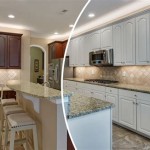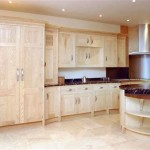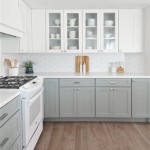1920s Kitchen Cabinets: A Revolution in Domestic Efficiency
The 1920s witnessed a transformative period in American domestic life, driven by technological advancements, changing social norms, and a burgeoning consumer culture. At the heart of this transformation was the kitchen, evolving from a utilitarian space into a streamlined and efficient center of the home. Integral to this evolution were kitchen cabinets, which shifted from simple storage solutions to sophisticated, integrated elements that defined the aesthetics and functionality of the modern kitchen.
Prior to the 1920s, kitchens were often relegated to the back of the house, serving primarily as a workspace for servants or hired help. Storage typically consisted of freestanding pieces like Hoosier cabinets, pantries, and open shelving. These setups, while functional, often lacked cohesion and were not designed for optimal efficiency. The rise of the middle class and the increasing availability of household appliances created a demand for more organized and user-friendly kitchens.
The 1920s saw the emergence of the "built-in" kitchen, a concept that revolutionized kitchen design. This approach integrated cabinets seamlessly into the architecture of the house, creating a unified and efficient workspace. This was a departure from the practice of having separate, moveable units.
The Standardization of Kitchen Cabinet Sizes
One of the key developments in 1920s kitchen cabinet design was the gradual standardization of sizes. This standardization allowed for easier mass production and installation, making built-in kitchens more accessible to a wider range of homeowners. While not as rigid as modern standards, manufacturers began to converge on common widths, heights, and depths for base and upper cabinets. This allowed for greater flexibility in kitchen layouts and facilitated the integration of appliances like stoves and refrigerators.
Base cabinets, typically 36 inches high, were designed to provide a comfortable working surface, especially when paired with new appliances. Upper cabinets, usually 12 to 18 inches deep, were hung above base cabinets to maximize storage space. The standardization of widths meant designers could mix and match different cabinet configurations to suit the specific needs of the homeowner. This increased efficiency in the kitchen, reducing the amount of time needed to prepare meals.
While standardization was becoming increasingly prevalent, variations did exist. Custom cabinet makers could still create cabinets to specific dimensions, catering to the needs of homeowners with unique spaces or design preferences. However, the trend towards standardization paved the way for the mass production of kitchen cabinets and the widespread adoption of the built-in kitchen concept.
Materials and Finishes Popular in 1920s Kitchen Cabinets
The materials used in 1920s kitchen cabinets reflected a balance between practicality and aesthetics. Wood was the primary material, with popular choices including pine, oak, and birch. These woods were relatively inexpensive, readily available, and offered sufficient durability for kitchen use. Pine was frequently used as a base material and painted, while oak and birch were often stained or varnished to highlight their natural grain patterns.
Painted cabinets were particularly popular, reflecting the clean and modern aesthetic that was in vogue. White and light-colored paints were common choices, as they brightened the kitchen and created a sense of spaciousness. Enamel paints were often used for their durability and ease of cleaning. These paints provided a smooth, glossy finish that was resistant to moisture and grease, essential qualities for kitchen environments.
Hardware also played a significant role in the overall look of 1920s kitchen cabinets. Chrome and nickel were popular choices for knobs, pulls, and hinges, reflecting the Art Deco influence of the era. These metals provided a sleek and contemporary aesthetic, complementing the clean lines of the cabinets. Bakelite, an early form of plastic, was also used for cabinet hardware, offering a durable and affordable alternative.
Countertops in 1920s kitchens were often made of linoleum, a durable and easy-to-clean material that was available in a wide range of colors and patterns. Other countertop options included wood, often sealed with varnish or shellac, and tile, which provided a durable and hygienic surface.
The Impact of the Hoosier Cabinet
While the built-in kitchen was the major trend of the 1920s, the Hoosier cabinet still held a significant influence, particularly in homes that couldn't afford or didn't want a fully remodeled kitchen. The Hoosier cabinet was a freestanding, all-in-one kitchen workstation that had been popular since the early 1900s. It typically included features like a flour sifter, spice racks, a metal countertop, and storage drawers.
The Hoosier cabinet served as a bridge between the older, less organized kitchen and the modern, built-in kitchen. It offered many of the conveniences of a built-in kitchen in a single, relatively affordable unit. As built-in kitchens became more accessible, some homeowners incorporated Hoosier cabinets into their new layouts, using them as supplementary storage or as a focal point in the kitchen design.
The Hoosier cabinet's influence can be seen in the design of built-in cabinets. The concept of incorporating specialized storage solutions, such as spice racks and flour bins, was adopted into the design of built-in cabinets. The Hoosier cabinet also popularized the use of metal countertops, which were later incorporated into some built-in kitchen designs.
The 1920s marked a pivotal moment in the evolution of kitchen design. The shift from freestanding furniture to integrated, built-in cabinets transformed the kitchen into a modern, efficient, and aesthetically pleasing space. Standardization of sizes, durable materials, and the enduring influence of the Hoosier cabinet all contributed to this transformation, setting the stage for future innovations in kitchen design.

Vintage Restoration Bringing This 1920s Kitchen S Cha

First Friday Feature An Ode To The 1920s Kitchen Style

First Friday Feature An Ode To The 1920s Kitchen Style

Before And After From The 1920 S To Present Kitchen Bath Remodeling Mn

Vintage Restoration Bringing This 1920s Kitchen S Cha

How Kitchens Have Evolved Over The Last 100 Years Crafty House

Will 1920s Art Deco Kitchen Style Make A Comeback In 2024

1920 S Historic Kitchen Farmhouse Seattle By Sadro Design Studio Inc Houzz

First Friday Feature An Ode To The 1920s Kitchen Style Custom Remodel Inspirations

How Interior Designer Whitney Walker Transformed A 1920s Kitchen
Related Posts








